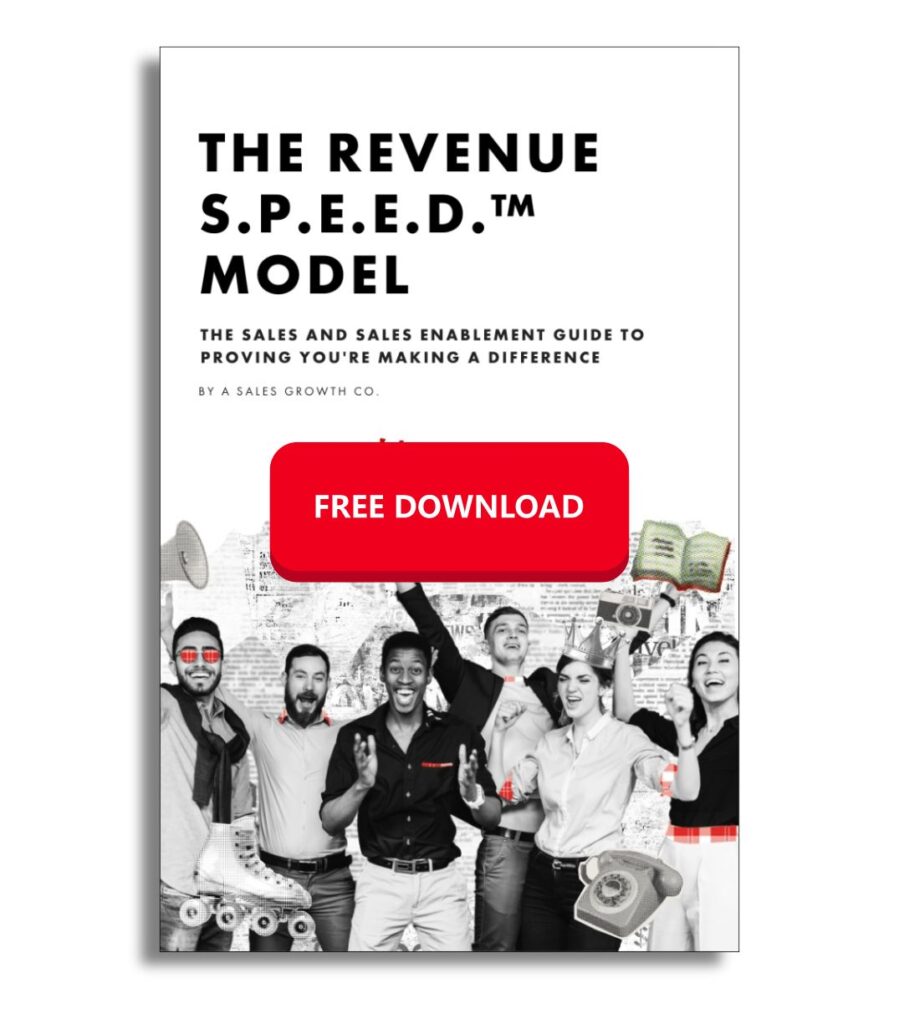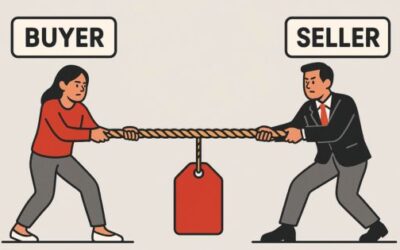Google “sales discovery” and you’ll be hit with an avalanche of advice. Hundred of blogs, videos, and downloadable PDFs all promising to transform your pipeline with magical lists and foolproof scripts. Titles like “30 Discovery Questions that Close Deals” or “The Ultimate Sales Discovery Checklist” claim to hold secret to turning every prospect into a paying customer.
Let me save you the trouble of clicking: they don’t work.
Sure, these lists look good, they make you feel productive, they make you believe you’ve added something to your team’s toolbox. But, checklists don’t close deals. They don’t uncover any truths behind the buyer’s challenges, they don’t build the urgency needed to drive change. Instead, they act as a crutch that keeps you stuck in surface level conversations.
If you’ve ever wondered why your pipeline is leaky, deals are stalling, and your close rates are falling, it’s because your checklist discovery is focused on the wrong thing. You’re chasing facts instead of uncovering problems.
And that’s where it all falls apart.
The False Promise of Discovery Checklists
Every salesperson has seen them, the shiny, polished lists that promise to revolutionize your discovery process
“30 Sales Discovery Questions that Guarantee More Closed Won”
“The Ultimate Checklist to Close More Deals”
Clickbait for sellers desperate to fill their pipeline, these lists promise quick wins and magical results. But, let’s think for second, if checklists were the answer, why does the entire sales profession still struggle with win rates hovering around 20%? Why are deals leaking out of the pipeline faster than they come in?
Unfortunately, checklists are a crutch. They make you feel like you’re doing your job, but in reality, they’re busywork in disguise. Instead of driving deep, meaningful conversations, they keep your discovery calls at the surface, ticking boxes, but leaving the real issues untouched.
I get asked all the time if I have a list of discovery questions reps can use, and my answer is always the same: “What problem, that you solve, are you trying to uncover with the potential buyer?” Because if you’re not focused on the problem then all the fields in your CRM are noise.
Checklists and scripts don’t create urgency, they don’t build trust, and they definitely don’t replace the ability to have meaningful, problem-centric conversations. If your discovery continues to be a fact finding missions then your deals will continue to stall, your pipeline will remain fluffy, and your close rates will stay flat.
Problems with Sales Discovery
No one likes to admit it but most sales discovery processes are broken. Reps spend their time asking the checklist questions hoping to stumble across something meaningful. They ask questions like:
What’s the timeline for this project?
Is there budget allocated for this?
Are you the decision maker for this purchase?
These questions aren’t wrong, but they’re useless if you haven’t identified the root problem the buyer needs solved. They focus on how a deal might happen, not why it should happen at all.
Why This Happens
Reps are trained to focus on filling out CRM fields rather than uncovering what’s going wrong. They believe that if every box is checked, the deal will naturally move forward. But, checking boxes doesn’t drive urgency, it doesn’t connect your product to the buyer’s world, and it doesn’t make a case for change.
Buyers aren’t sitting around waiting to answer your questions. They’re busy. They’re under pressure. And in many cases, they don’t fully understand the problems they’re trying to solve. If your discovery process doesn’t help them see what’s at stake, you become another interruption to their day.
Gap Selling Discovery
As a salesperson, your job isn’t to fill out a form, it’s to help your buyer recognize the gap between their current state and the future state they want to achieve. That’s where the value is. That’s where the sale lives.
Without a clear understanding of: the buyer’s current environment, the problems they face, and the impact of those problems on the business, your discovery will always fall short.
Sales is about change. If you can’t uncover and articulate why the buyer needs to change, no amount of checklists or CRM entries will save you.
What buyer’s truly want
What do buyers actually want from a discovery call? They want partners who understand their problems better than they do. They’re not looking for an interrogation, they’re looking for someone who can help them see challenges they didn’t even realize they had.
48% of buyers admit they’ve purchased the wrong product because they didn’t understand the problem they were trying to solve
61% of buyers have bought a solution they didn’t know they needed until a salesperson showed them the impact of their problem
The main reason deals stall? Salespeople didn’t understand the buyer’s business problem or the urgency behind them.
This is the buyer’s reality, they’re unsure of their own needs and they’re looking for a guide, someone to help them scope their problem, uncover its impact, and map out a path forward.
Product-Centric Discovery
Most reps enter a discovery call with one goal, to get to the pitch. They focus on how to fit their solution into the buyer’s world instead of trying to understand that world. The result? Buyers see the product as a cost rather than a solution. They don’t see the value because it hasn’t been connected to a problem.
When you lead with product, you’re leaving the buyer to do the heavy lifting. You’re asking them to figure out how your features might fit their needs, something they’re not equipped to do. If they can’t calculate the value of change you’re proposing, they’re not buying.
What Buyers need instead
What buyers want is simple: clarity. They want someone to help them understand:
The problem: what’s wrong with their current state?
The impact: how is this problem costing them time, money, or resources?
The solution: Why does this problem need to be solved now, and why are you the right partner to solve it?
Problem-Centric Discovery Framework
If checklists and product focused pitching is failing you, it’s time to try something different. Here’s the playbook for making that shift:
Step 1: Know the problems you solve
Before even picking up the phone, your team needs to know the three or four core problems your product or service is designed to solve and you need to understand how these problems manifest in your buyer’s world.
What does the problem look like in their environment?
What are the downstream impacts of leaving it unaddressed?
How does it affect their ability to achieve their goals?
Too often, reps rely on buyers to articulate their problems. But buyers don’t always know what’s wrong, let alone what’s causing it. It’s your job to bring clarity. If your team can’t answer these questions, your discovery process needs help.
Step 2 Build Business Acumen
Great salespeople are BOTH product experts AND business experts. They understand their buyer’s industry, market challenges, and internal dynamics. This knowledge is what sets advisors apart. Take the time to dive into:
Industry Trends: What’s happening in their market that could amplify their problems?
KPIs: What metrics are they chasing, and how does their current state fall short?
Internal Processes: How are their teams and workflows affected by the problems you solve?
The internet is your best friend here. Tools like ChatGPT, LinkedIn, and company websites give you the insights you need to walk into a discovery call prepared to have a meaningful conversation. Show your buyers that you understand their world better than the competition and you instantly stand out.
Step 3: Make the Problem-Product Connection
Discovery isn’t finding the problem alone, it’s also helping the buyer see how your solution addresses it. We don’t want to rattle off features, instead creating a direct connection between their pains and the value you bring in the form of features that alleviate the pains.
Here’s how:
Focus on Impact: what’s the cost of inaction? Help your buyer see the ripple effects of their problem – lost revenue, waster resources, competitive disadvantage.
Visualize the Future state: What changes when they solve this problem? How does their world improve?
Position your solution: Show why, specifically, your product or service is uniquely suited to close the gap between their current state and their desired future state.
We’re creating a partnership. When buyers see you as someone who understands their challenges and can help them achieve their goals, they’re far more likely to move forward.
Power of Problem-Centric Discovery
When you embrace a problem focused framework, discovery stops being a box checking exercise, and becomes a foundation for trust, credibility, and urgency. Rather than asking yourself can we close this deal? Problem-centricity begins to ask how can we solve this problem together?
In closing
Discovery is the foundation of every successful sales, if it’s done right. When you ditch the checklists and lean into problem-centric discovery, you stop scratching the surface and start solving meaningful problems. The payoff? Faster sales cycles, higher win rates, and deals that actually close.
By equipping your team with the tools to ask better questions, listen actively, and think critically, you’ll transform your pipeline from bloated and stagnant to lean and high performing.
Leave the scripts behind, go deeper, and watch you sales outcomes change. The future of your success starts with the problems your team is ready to solve.



0 Comments